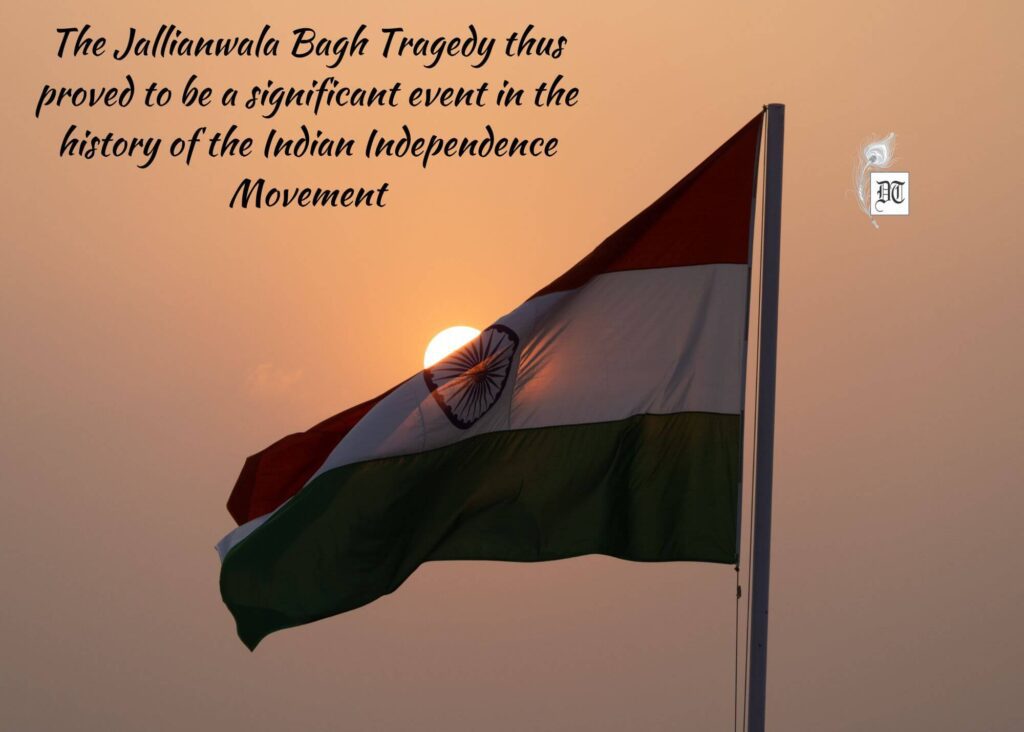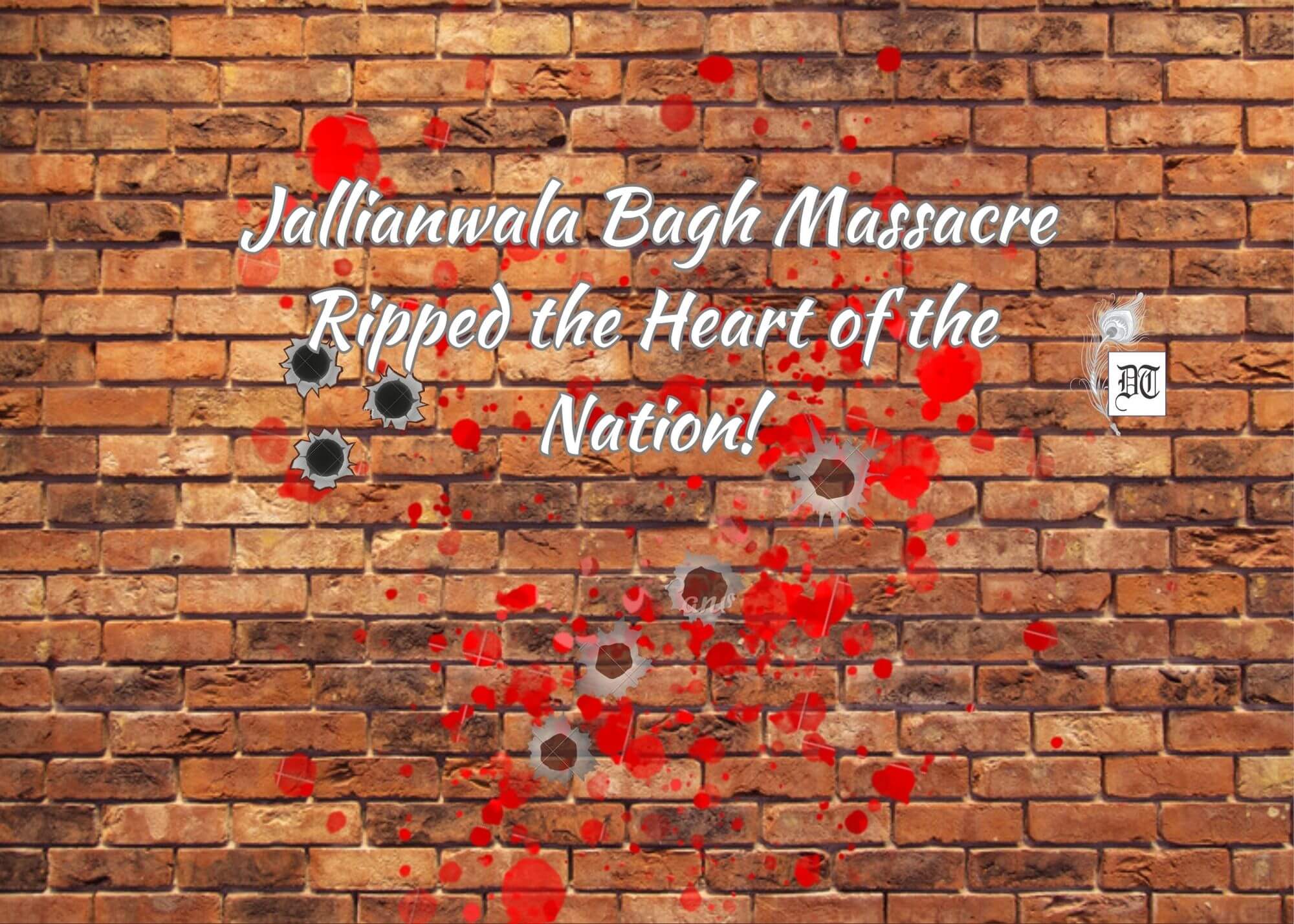Reading Time: 4 minutes
One hundred and four years ago, the Jallianwala Bagh massacre, on April 13, 1919, ripped the nation’s heart. Exclusive to Different Truths, Dr Baljeet examines how the barbaric slaughter fuelled nationalist fervour and impacted the Indian Freedom Movement.
The Indian Independence Movement started against British rule’s tyrannical and exploitative nature. The British had arrived in India as traders in the form of the East India Company. The Company’s trade flourished and made progress by leaps and bounds. Sensing the divisions in Indian society based on castes and creeds and envy among the Indian states, the Company ventured to carve out its political space. The decisive victory in the Battle of Plassey (1757) made the British masters of Bengal. After that, there was no looking back. With the ticking of the clock, they conquered almost all the Indian states by 1857. The Company thus became paramount power in every sphere, and corruption crept into it. The British government then decided to end the corrupt rule of the Company. Therefore, by an Act of 1858, it took over the reins of administration from the Company. Direct rule from England was thus established over India. But this transfer of power from the Company to the Crown did not change the exploitative nature of the British government.
Against this backdrop, Indian National Congress started to awaken the general masses. Its method was to pray and petition the government about its demands. But unfortunately, this method proved to be very ineffective. Anger and frustration among the Indian people, however, continued to grow against the government. On April 13, 1919, a large crowd, estimated 20,000, people gathered at the Jallianwala Bagh, Amritsar. The gathering was to be addressed against the arrest of two prominent independent activists – Dr Saifudin Kitchlew and Dr Satyapal. The day being a Baisakhi festival, comparatively many people had arrived in Amritsar to pay obeisance at the Golden Temple. After that, they went to Jallianwala Bagh to rest.
When General Dyer learned about the gathering, he crushed it with a heavy hand.
Michael Francis O’Dwyer, Lieutenant Governor of Punjab, ordered General Reginald Dyer to take stock of the situation. When General Dyer learned about the gathering, he crushed it with a heavy hand. A well-armed police force was deployed at the only narrow passage (exit) of the Jallianwala Bagh. He ordered indiscriminate fire on the unarmed and peaceful people without sufficient warning. Firing continued till almost the whole ammunition was exhausted. According to government reports, 379 people died on the spot, and 1200 were injured. But Congress Inquiry Committee reported 1200 deaths and 3000 wounded. The Lieutenant Governor of Punjab endorsed General Dyer’s barbaric action. The government constituted Hunter Commission to investigate the whole incident. The Commission submitted its report without recommending any disciplinary action against Dyer. The latter justified his action by pleading that he quelled the rebellion against the government. The government later let him off with a mild reprimand. After the Jallianwala tragedy, martial law was imposed on Amritsar, and the ‘Reign of Terror’ let loose on the people. Riots were reported from various parts of the state as a reaction to it. For example, In Gujranwala, twelve people died in these riots, and many were injured. The fury of the people knew no bounds.
The Jallianwala Massacre sent shockwaves across people of all categories. It united them to throw off the yoke of the brutal British government. This dastardly act of the colonial government was condemned by all in the most unequivocal, harsh, and severest terms. Mahatma Gandhi called it an ‘unexampled act of barbarity’ and returned Kaiser-i-Hind Medal awarded by the government. In the same vein, the great poet Rabindranath Tagore returned his knighthood. Sir Shankar Aiyar resigned from the Viceroy’s Council in protest. Mohammed Ali Jinnah termed it as ‘physical butchery’. Moti Lal Nehru denounced it as the ‘saddest incident’.
This cruel act is considered a turning point in the history of the Indian Independence Movement.
This cruel act is considered a turning point in the history of the Indian Independence Movement. It gave a big push to it. The Indian National Congress, in its session held in Amritsar, condemned this barbaric act and the ‘Reign of Terror’ of the British government. Its attitude changed entirely towards the colonial government. Firstly, Congress termed the Act of 1919 as ‘inadequate, unsatisfactory and disappointing’. It demanded the resignation of the Lieutenant Governor of Punjab and harsh punishment of General Dyer.

Secondly, it had a profound impact on Mahatma Gandhi. Earlier, he trusted and cooperated with the British. But this tragedy turned him to be their enemy. He then started Non-Cooperation Movement against the British government in September 1920. Its objective was to boycott all government institutions, burn imported clothes, and picket liquor shops. The Movement had enormous success, and hundreds of thousands participated enthusiastically. But unfortunately, some violent incidents in Uttar Pradesh compelled Gandhi to halt it. This was most tragic, and Mahatma Gandhi was bitterly criticised for this act.
Thirdly, disappointed with Mahatma’s policy of non-violence, some young men led by Bhagat Singh founded Bharat Nau-jawan Sabha and later Hindustan Socialist Republic Association/Army. They resorted to arms struggle to throw off the yoke of the British. Their method proved efficacious. And, in a short time, they shook the very foundations of the British Empire in India. They kissed the gallows gladly and inspired millions of their fellow citizens to join the freedom struggle.
… on March 13, 1940, 21 years later, Udham Singh … shot dead Michael O’Dwyer… at Caxton Hall, London.
Fourthly, on March 13, 1940, 21 years later, Udham Singh, a young man from Sunam in Punjab, shot dead Michael O’Dwyer, the Lieutenant Governor of Punjab, at Caxton Hall, London. He, thus, avenged the killings of innocent people at Jallianwala Bagh. His courageous act inspired innumerable people to join hands against the brutal government.
Next, this Massacre infused a new spirit and gave a new impetus to the Freedom Struggle. It became an all-India movement. The nationalists’ target was to attain full freedom from British rule instead of seeking constitutional and administrative reforms.
The Jallianwala Bagh Tragedy thus proved to be a significant event in the history of the Indian Independence Movement, which also changed its character and direction.
Picture design by Anumita Roy

















